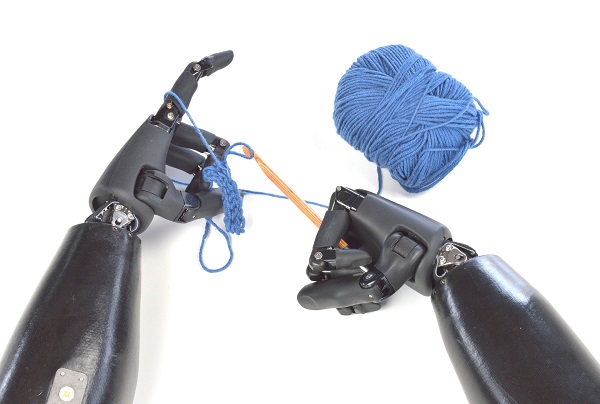Degrees in orthotics and prosthesis are among the highest paying master’s degrees. If it’s your first time ever hearing about these healthcare career paths, you might wonder how closely connected they are. Although orthotists and prosthetists serve different functions, these healthcare professionals share a common goal of aiding patients in rehabilitation and improvement of function. As a result, these two fields are closely connected yet distinguishable based on the type of medical device involved in them.
The Relationship Between Orthotics and Prosthesis
IMAGE SOURCE: Pixabay, public domain
Officially, prosthetics and orthotics are two distinct professions. However, there’s enough overlap between these occupations that the United States Bureau of Labor Statistics (BLS) combines the two careers into one listing in its Occupational Outlook Handbook. The primary focus of both prosthetics and orthotics is the creation of medical devices. These medical devices help patients live fuller lives, compensating for temporary or permanent disabilities and improving patients’ mobility and function.
Many universities offer graduate studies in these subjects as one master’s degree program that combines prosthetics and orthotics, rather than separate master’s degree programs. The curriculum of these graduate-level programs generally encompasses the theoretical principles, clinical practice and technologies used in both orthotics and prosthetics.
Both orthotists and prosthetists work as part of a patient’s healthcare team, often collaborating with doctors, physician assistants, nurse practitioners, physical and occupational therapists and other healthcare personnel, according to the National Commission on Orthotic and Prosthetic Education. For an orthotic or prosthetic medical device to have the best possible impact, it needs to fit the patient perfectly. Both types of medical devices are custom made, either by the prosthetist or orthotist or by the medical appliance technicians this professional supervises. Orthotists and prosthetists also determine what variety of medical device – whether high-tech or low-tech, primarily for aesthetics or for function – the patient should receive, based not only on the doctor’s prescription but also on their own interviews with and evaluations of the individual patient’s needs, according to the BLS.
Besides making – or overseeing the making of – orthotic and prosthetic medical devices, orthotists and prosthetists provide patient care that is relevant to the device. That doesn’t mean diagnosing their medical conditions, but it does include instructing patients on the proper use and care of their medical devices and adjusting or repairing the medical device as needed.
Many of the companies that employ orthotists and prosthetists perform work in both of these fields, since there is so much connection between them.
How Orthotics and Prosthesis Are Different
The biggest distinction between orthotics and prosthesis is the type of medical device being developed. Prosthetic medical devices are those that are used as artificial limbs, such as hands, feet, arms and legs. Some prosthetics are made to resemble the natural missing limb, while others, such as running blades, are made purely with function in mind. Prosthetics can be low-tech, passive devices that primarily assist the patient by stabilizing them. They can also be active devices that perform functional movements and are increasingly becoming high-tech, some of which can be integrated into the patient’s nerves and controlled with their mind, much like their missing natural limb would be.
Orthotics are different kinds of medical devices. Rather than replacing missing limbs, they act as orthopedic braces and other supportive devices. You might use orthotics if you injure your spine, your knee, or another part of your musculoskeletal system. Because they don’t replace missing limbs – only help heal injured ones – more patients will, at some point, have a need for orthotic devices than prosthetic devices.
The American Board for Certification in Orthotics, Prosthetics & Pedorthics distinguishes its professional credentials, awarding the Certified Orthotist and Certified Prosthetist credentials. It is possible to become credentialed in both fields under the Certified Prosthetist Orthotist designation, but you must complete all certification requirements and examinations needed for both of these individual certifications to do so. When you’re looking for a job in the field of orthotics and prosthesis, it’s not unusual to find that many healthcare companies will consider candidates with either job title or type of certification, although some companies specifically look for applicants with experience or certification in both fields.
The American Board for Certification in Orthotics, Prosthetics & Pedorthics also awards certification to assistants and technicians in orthotics and prosthetics as well as orthotic fitters, therapeutic shoe fitters, mastectomy fitters and pedorthists.
Additional Resources
Where Would I Work With a Degree in Orthotics and Prosthesis?
What Does Someone Do on a Day-to-Day Basis in Orthotics and Prosthesis?
What Personality Traits Are Important to Have in Orthotics and Prosthesis?

